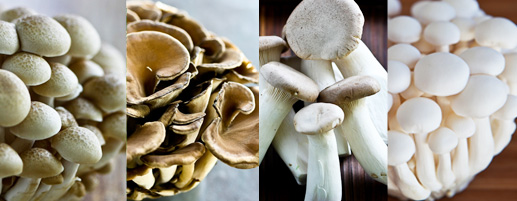September is National Mushroom Month and is a great time to enjoy an exotic food once reserved for royalty. I’d like to present some fun facts about mushrooms. Let’s see how mushroom savvy we are!
Did you know?
While often thought of as a vegetable and prepared like one, mushrooms are actually a fungus, a special type of living organism that has no roots, leaves, flowers or seeds.
Mushrooms are more closely related to animals than plants and like most living organisms, are 85-95 percent water. Also similar to mammals, mushrooms take in oxygen for their digestion and metabolism and “exhale” carbon dioxide as a waste product.
Mushrooms grow from spores, not seeds, and a single mature mushroom will drop as many as 16 billion spores!
An interesting species, the Honey mushroom, contains an enzyme and other compounds that, similar to fireflies, causes it to emit an eerie, greenish glow at night. The enzyme reacts with oxygen in the air and create the greenish-white light that is often seen in forests, especially ones with a lot of oak trees.
Just like humans, mushrooms can produce Vitamin D upon exposure to sunlight and ultraviolet (UV) radiation. UV light is utilized in the production of Hokto mushrooms. For example, a four-ounce (112 grams) serving of Maitake mushrooms grown by the Hokto-patented methodology may contain up to 58% of the Daily Value for Vitamin D. Emerging evidence suggests that many people today do not have optimal blood levels of Vitamin D.
Mushrooms are one of the oldest living organisms known to man, with approximately 14,000 species. However, only a small fraction of those, about 250, are actually edible. Edible mushrooms are popular all over the world, with Americans consuming about almost 10 pounds per person per year and Japan holding the record for the highest consumption of mushrooms of about 26 pounds per person annually.
A notable source of B vitamins, phosphorus, magnesium, potassium and selenium, mushrooms also provide a significant source of fiber, with a 3 full grams in a typical 3.5 ounce serving.
Mushrooms contain compounds that are considered to be “immuno-modulators”. When eaten, the bioactive compounds (Beta-D-glucan and antioxidants) have strong effects on our immune system. The effect can either be of “up-regulation” of a weak immune system that is compromised in its ability to fight infections, or “down-regulation” of a functioning but misdirected immune system that is causing auto-immune disorders such as allergies, arthritis, asthma and other disorders. The Maitake mushroom is especially high in these compounds.
Conventionally grown button mushrooms are farmed using manure and dirt. Hokto’s mushroom cultivation process is completely different, involving no dirt or manure and is done inside in well-lighted, hygienic, environmentally controlled growing rooms using unique bottle technology.
Raise a Mushroom in Honor of National Mushroom Month
At Hokto’s culinary seminars at the San Diego County Fair in June, the beer-batter fried mushrooms were a big hit. Below is a similar recipe for the whole family to enjoy.
Basic Batter Fried Mushrooms – Crunchy and Tasty!
2 cups (about two packages of Hokto mushrooms)
1 c. flour (white or wheat)
1/4th to ½ tsp. salt
1/2 tsp. white or black pepper
1 – 2 tbsp. grated cheese (Romano or Parmesan) optional
dash of Cayenne pepper or paprika (optional)
1/2 c. cold milk
1 egg, beaten
oil for frying (can use canola, soy or corn oil combo)
Directions:
In a mixing bowl, combine the dry ingredients: flour, salt, pepper (and optional grated cheese or spices). Stir in the milk and egg; mixing until smooth.
Remove the base of the Hokto mushrooms in one easy slice. Use White or Brown Beech mushrooms whole or slice the King Trumpet mushrooms in half. Dip mushrooms into the batter and place carefully in heated oil. Fry until the mushrooms are golden brown, about 3 minutes, turning once. Drain on paper toweling.


